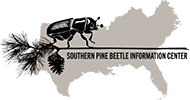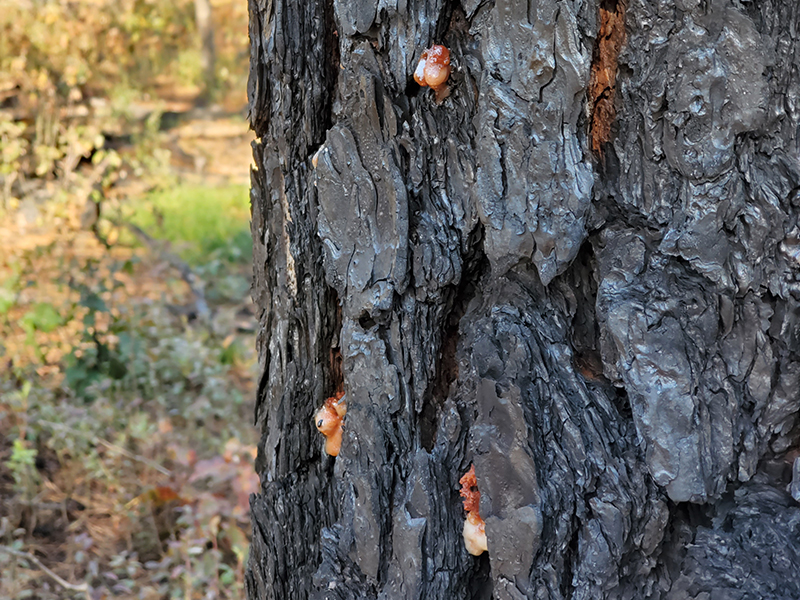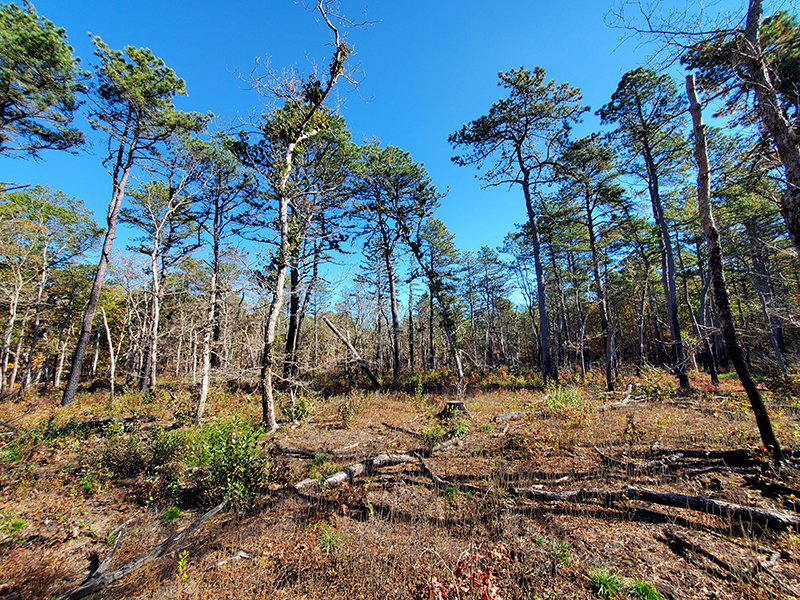Around the Globe
Northeast United States
Recent climate-driven range expansion by SPB has resulted in a new pest-tree interaction in New York and being detected (but not found to have killed trees) in other areas of New England. Since the early 2000s, damaging SPB populations have persisted in New Jersey in what has been described as an initial northern range expansion. Southern pine beetle was detected in 2014 at multiple locations on Long Island, New York, and then further delineated across New England in subsequent years – including Maine, Massachusetts, and New Hampshire. Each year since detection on Long Island, SPB has caused damage to over 6,000 acres of pitch pine. Many stands that maintain overstory pitch pine have largely gone unmanaged and are currently in conditions conducive to supporting SPB population growth. Further, pitch pine regeneration is difficult without fire and disturbance, two processes that have been mostly suppressed in these stands.
The arrival of SPB into New York and subsequently other areas of New England increased the need for both reactive and preventative treatments in pitch pine forests in the region. SPB spot suppression has become an important tool to address current infestations in New York. All infested trees and a green tree buffer are cut with the hopes of disrupting spot growth. Fortunately, silvicultural treatments focused on reducing SPB impacts align with pitch pine restoration efforts in the region.
Mexico and Central America
The range of SPB extends throughout Mexico and Central America as far south as Nicaragua. There have been frequent SPB outbreaks since the 1980s with significant outbreaks in the late 1990s and early 2000s in Mexico and Central America (Guatemala, Honduras, Belize, and Nicaragua). Currently, populations of this bark beetle are at low levels throughout the region. The most recent serious outbreak occurred in Honduras and lasted from 2014 to 2018 and impacted more than 500,000 hectares of native pine forests (primarily Pinus oocarpa and P. caribbea). Outbreaks of SPB occur periodically in Central America, and it is likely just a matter of time before another one develops.




